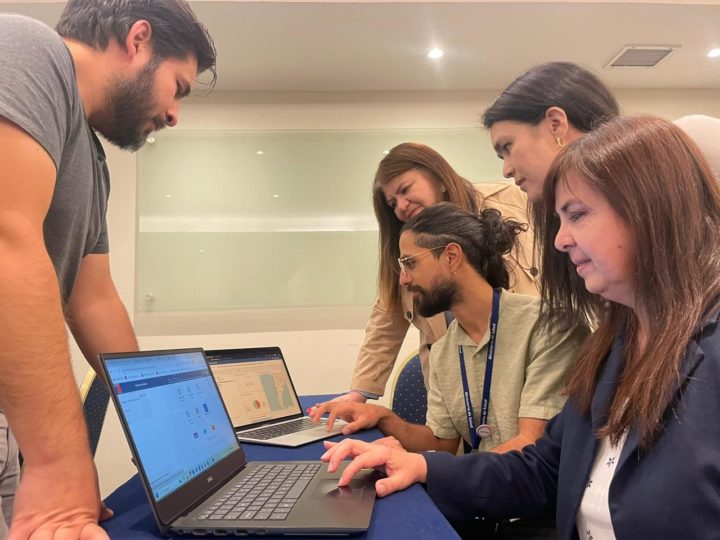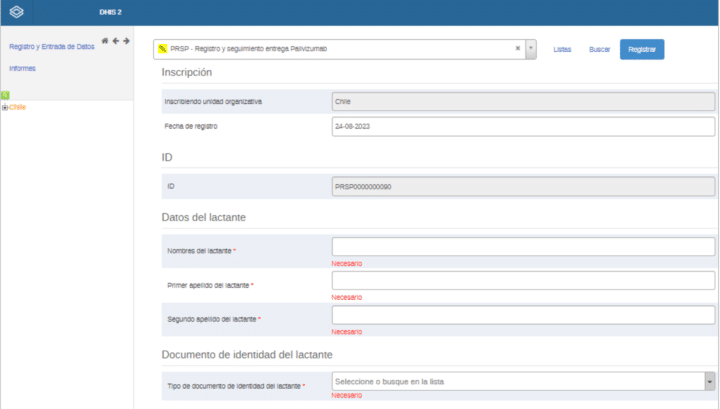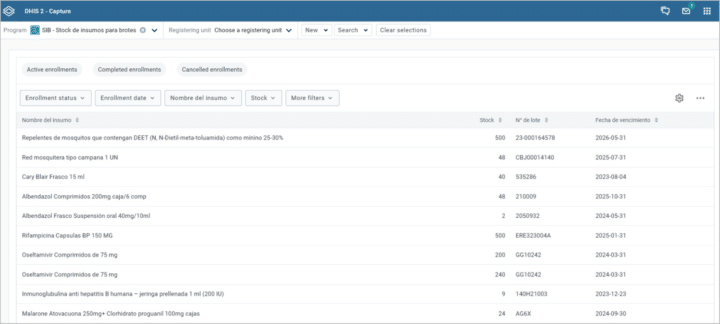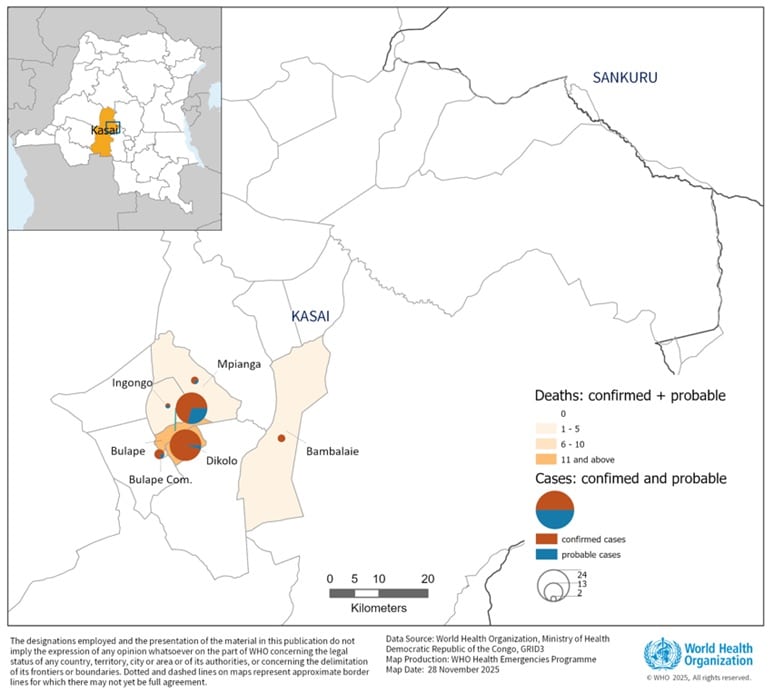
Building an Innovative Epidemiological Platform in Chile with Local Expertise and Community Support
The Ministry of Health of Chile independently developed a cloud-based implementation of DHIS2 at national scale — improving effectiveness and lowering costs — using public documentation, free training material, and input from the global DHIS2 community
In recent years, the Chilean Ministry of Health has faced challenges in its epidemiological surveillance system, from data collection to the use of data for decision making. Thus, a variety of forms and tools for sending and systematizing data have been deployed to help fill these gaps. Today the Ministry has different platforms depending on the type of surveillance, such as the declaration of notifiable diseases, surveillance of outbreaks, or in sentinel centers. The COVID-19 pandemic revealed the need for a more robust and agile system, which can quickly adapt to the needs of health emergencies..

The head of the epidemiology department, Dr. Christian García, who has promoted the development of DHIS2 as an information system in Chile says that:
“It is essential to move towards flexible and open access systems that are adaptable to changing needs. For that reason we have promoted the use of DHIS2 in our department. The idea is to generate an epidemiological surveillance ecosystem that facilitates data capture, rapid analysis and pattern detection, as well as allowing us to manage the different surveillance activities carried out by the department. Our DHIS2 epidemiology team has developed various products that respond to our surveillance needs and provide information for action.”
The MoH began in 2022 by implementing DHIS2 for specific programs like RENCI (the National Childhood Cancer Registry) and Paxlovid (delivery of medications for the treatment of COVID-19 in specific patients), neither of which were covered by their existing platforms. What was significant for the MoH team was that they were able to configure, implement and manage their national-scale DHIS2 system independently, without the need for outside consultants or developers. This autonomy was made possible by the open-source nature of DHIS2, the extensive documentation and public resources provided by the HISP Centre, and active support from the DHIS2 Community of Practice (CoP).
Through their implementation process, the MoH team developed a cloud architecture for deploying DHIS2, which they have shared as a public good, enabling other countries to replicate their innovative approach. They estimate that this will lower their operating costs by 5-10%. Using DHIS2 has also had transformative effects on health programs in Chile like RENCI and Paxlovid, which have become more efficient and effective. The MoH seeks to expand DHIS2 into additional health programs, and continues to adapt it to other surveillance activities, such as epidemiological surveillance of sentinel centers and stock management of medicines to control disease outbreaks. In the last Pan American Games, held in Santiago in October 2023, DHIS2 was also used for the registration and notification of events related to the health of athletes and their delegations.
“Having a multidisciplinary team working on the development and implementation of DHIS2 made it possible to create robust, adaptable and innovative products, in addition to innovation in the design of the cloud architecture that has marked an important milestone for the Department of Epidemiology of the Ministry of Health.”
Leveraging Open-Source to Build a Modern Surveillance System
The Chilean Ministry of Health explored several options to continue advancing its epidemiological surveillance system before deciding that DHIS2 was the solution. Because this platform is free and open-source, the Ministry’s technical team was able to download, install and configure the platform on their own and experiment with different approaches and options.
When setting up its DHIS2 system, the Ministry team took advantage of DHIS2 documentation, courses at the DHIS2 Online Academy, public demo instances, tutorials on the DHIS2 YouTube channel, other training materials, and also the support from other users who share their experience and knowledge in the Community of Practice (CoP). These resources empowered the MoH team to make informed decisions about system architecture and functionalities, reducing the need for external support and giving them ownership and control over their DHIS2 system.
The team initially installed the software on a local server, following guides on GitHub and the DHIS2 documentation website. This allowed them to generate three environments for development, testing and production, ensuring a robust testing mechanism before implementing DHIS2 nationally. From that starting point, they migrated from their local server to a Platform as a Service (PAAS) cloud model.
This architecture is unique to the Chilean MoH and can serve as a blueprint for other countries seeking to use DHIS2. The MoH Technical Team made the decision to make the code developed during this process available to the DHIS2 community, as a contribution to the ecosystem and to facilitate cloud-based deployments in any country using DHIS2. They also shared their experience and knowledge with the core DHIS2 team at the HISP Centre, helping to identify areas for improvement in documentation and training materials.

Customizing DHIS2 to Meet Local Health Program Needs
When starting the implementation of DHIS2, the Ministry of Health started with two programs: RENCI and Paxlovid. One of the first steps in using these programs was to create hierarchical structures of organizational units at four levels: national, regional, communes (districts) and health facilities. This configuration was manual and required meticulous work, but it was essential to prepare for granular data collection and analysis from the national to the local level. They also made organizational groups based on the complexity of the facilities — high, medium or low — in order to refine the data. For example, the Paxlovid program, which seeks to treat COVID-19, only takes place in highly complex facilities. Custom dashboards were developed for each level, allowing access to critical data for these programs, such as heat maps showing facilities with higher case volume.
Another area of focus during the customization process was the user interface. The team wanted to make the interface accessible and easy to learn, which is crucial for the workers responsible for delivering the data, who are mostly healthcare professionals, not IT experts. The team decided to use Tracker through the DHIS2 interface to collect and manage data from individual patients, such as infant patients in the RENCI program. The MoH team configured the design, content and workflow of Tracker for the needs of each program. For example, in Paxlovid, where medication must arrive no later than 5 days after COVID-19 symptoms occur, the program starts at the onset of symptoms, guides the user through the three criteria for prescribing medication, and contains steps for supervision and monitoring.

As of mid-2023, the Ministry of Health had already included six additional programs in its national DHIS2 system: Palivizumab (monoclonal antibodies to protect newborns at risk of respiratory infections due to respiratory syncytial virus); Notifying Units, a program that seeks to strengthen the surveillance of rubella, measles and poliomyelitis through notification by epidemiological week at the national level; the Environmental Event Registry Program, to monitor and provide a timely response to environmental incidents that affect health. The Epidemiological Isolation Control Program, for managing registration of users housed in isolation units in the face of the COVID-19 pandemic, is also available to be used in the event of a new pandemic or the need to open an isolation unit in response to a health emergency.
During the 2023 Pan American and Parapan American games in Santiago de Chile, the Response to Public Health Events program was developed so that participating delegations could report health events or disease cases and to support public health monitoring, ensuring a quick response to possible outbreaks or health incidents or health incidents related to the games.
Each program in DHIS2 is designed to fill gaps in the national health system, and their implementation implies a significant improvement for public health in Chile.
Improving Stock Management with DHIS2
In addition to the health programs listed above, the MoH is also developing an Outbreak Input Stock registration program in DHIS2 for drug inventory control; an example of using DHIS2 for Logistics. This system seeks to supervise the distribution of outbreak-control drugs from the Ministry to regional health authorities. The second phase of program development will focus on the management and monitoring of these drugs, ensuring adequate distribution in all regions. This program was designed in DHIS2 Capture to manage records by installation, region, date and lot number, and includes a personalized dashboard that can be downloaded in Excel format. The program provides real-time information on the availability of these drugs in the health system.

This program also has a warehouse inventory component that is divided into different stages, including drug lot number, quantity, expiration date, and spoilage. One of the team’s future goals is to implement automatic alerts when inventory drops below a certain threshold, allowing timely reordering of essential medicine. This would be the third step of the implementation, which seeks to ensure that warehouses have sufficient inventory of outbreak-control drugs.
Future Plans & Challenges
The Ministry of Health has ambitious plans for the future, seeking to leverage the benefits of DHIS2 in the surveillance of 55 notifiable pathologies. In addition, there are plans to develop programs in DHIS2 for sentinel surveillance and other programs related to climate change, starting with the registration of events related to heat waves and a second phase registration of extreme environmental events, such as earthquakes, fires and floods.
This work with DHIS2 is part of a mega-project in Chile to advance the generation of information from open-source software, strengthen the state’s capabilities in the development of technological products, and implement flexible information systems adaptable to new needs that arise from health problems. Among the main challenges in this project are change management, the redefinition of processes and the allocation of resources.
The experience of the Chilean Ministry of Health serves as a compelling testament to not only the flexibility and potential of DHIS2 software, but also the importance of documentation, training materials and an active Community of Practice. Not only was the team able to transition to a more robust and agile system that they can customize as needed, they also developed a unique cloud-based architecture, which was effective and appropriate for their context. This innovative work sets a standard for public health informatics in Chile and shows the transformative potential of open-source solutions.
This article is based on interviews with the Technical Team of the Chilean Ministry of Health. You can also watch a presentation on DHIS2 implementation in Chile from the 2023 DHIS2 Annual Conference.


